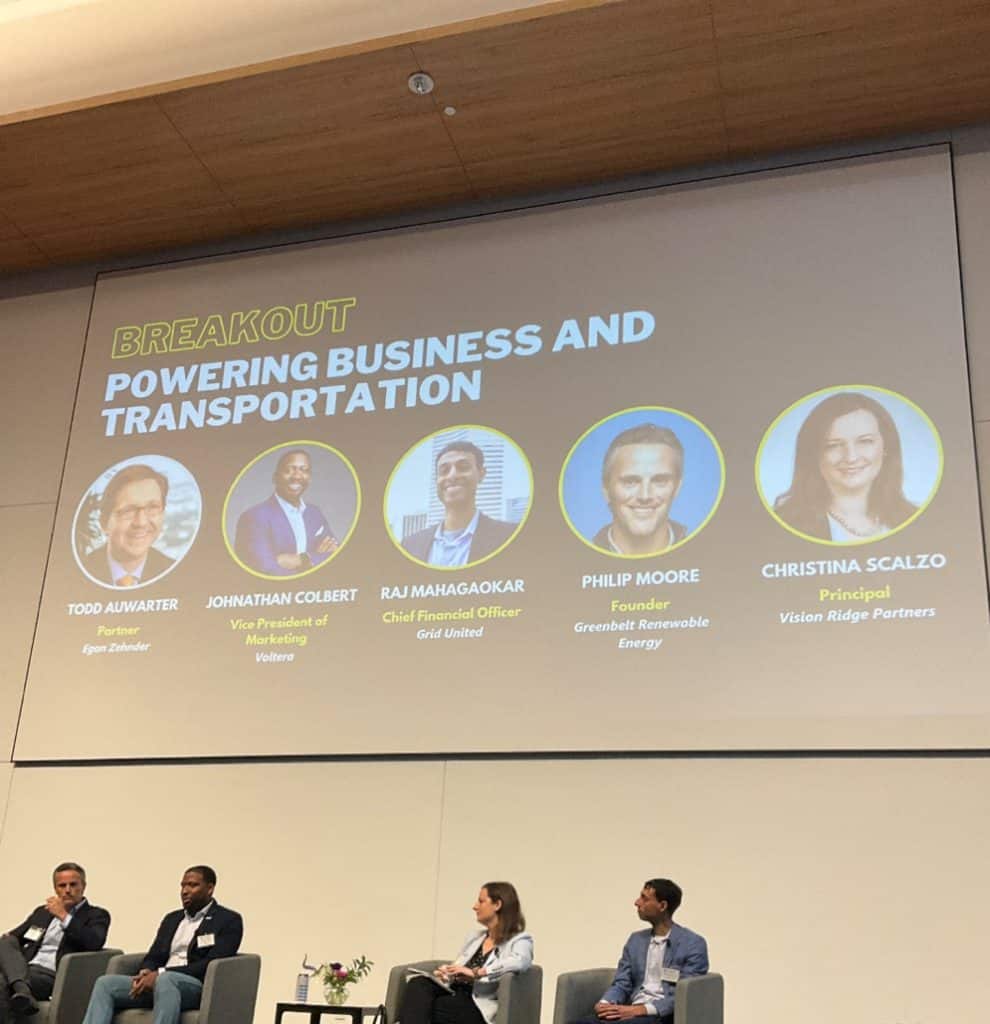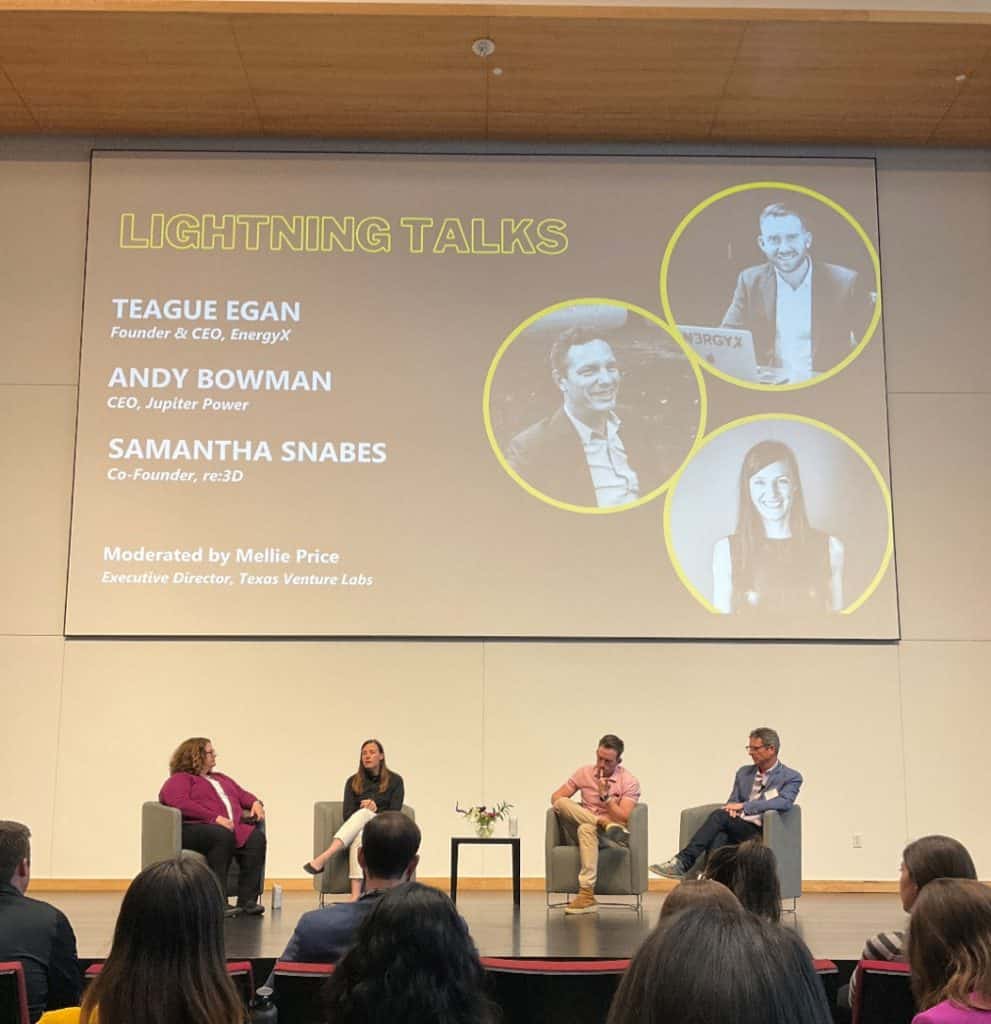Top 5 Things to Know about Climate-Smart Innovations

ClimateCAP brought together over 300 MBA students interested in making an impact in the fight against climate change for an informative and energizing event. We heard from experts discussing topics in all corners of the energy transition, from financing a sustainable future, to transforming agriculture and food systems. My personal primary career interests in entrepreneurship and startup space aligned perfectly with the theme of this year’s conference, innovation and climate.
To date, my career has revolved around financial services. Prior to attending Goizueta, I advised financial institutions, ranging from banks, FinTechs, and digital assets firms, on regulatory compliance, risk management, and strategy. My professional goal coming to business school was to gain the business acumen and network necessary to join and help grow an early-stage FinTech. My personal goal coming to business school was to get uncomfortable and dive into unknown areas and topics – climate change and ClimateCAP sat squarely within this goal.
I spent my summer internship within FinTech venture capital (which you can read more here), which was within my comfort lane of financial services. As Summer Fellows, we each pitched an investment thesis at the end of the internship. After much thought, I decided to pitch Climate FinTech, the intersection of FinTech and climate solutions. This was the beginning of my journey into understanding the need for climate solutions and how I can embed climate into my career. With that, here are five things I learnt about climate-smart innovations during ClimateCAP:
Embedding Climate within Business Strategies
The conference kicked off with a keynote from Paul Polman, the former CEO of Unilever, discussing the future of sustainable business. As future business leaders, I had two key takeaways on how we can embed climate within business strategies to drive innovation. First, it is critical that businesses integrate climate goals into their core business strategy. This includes setting science-based targets aligned with both the United Nations Sustainable Development Goals (SDGs) and the Paris Agreement. Jane Ewing, the SVP Sustainability at Walmart, echoed this sentiment when she said her sustainability team ideally should no longer exist in the future, since sustainability will be embedded throughout the organization and processes. Secondly, companies need to embrace long-term thinking, by shifting from short-term profits to long-term value creation, considering the broader social and environmental context. Together with embedding climate into business strategies, companies should also redefine success metrics and incentives to prioritize long-term sustainability. This can prove challenging with the way business performance is measured on a quarterly basis and executive compensation based on metrics such as earnings per share and stock price, but the far benefits outweigh the current status quo.
Circular Economy
Ron Gonen, Founder and CEO of Closed Loop Partners, an investment firm focused on the circular economy, provided interesting perspectives on building a waste-free world. We inherently believe that landfill is free, and garbage is free, which is an economic scam. For example, the New York government spends $400 million a year on landfill costs, just to ship what it collects from homes, schools and government buildings. Focusing on the circular economy can help address pressing environmental issues such as climate change, resource depletion, and pollution. By reducing waste and making better use of resources, we can decrease greenhouse gas emissions, protect ecosystems, and preserve natural resources for future generations. Gonen also highlighted Mori, a foodtech focused on extending shelf-life to reduce waste and create a more sustainable supply chain. Through this technology, we can reduce food waste and carbon footprint, and create flexibility in the supply chain.
Moving Power
In a breakout panel about powering business and transportation, the issue that stuck with me was the constraint in moving power. In today’s world, the existing energy infrastructure is often designed for centralized power generation, where electricity is produced in large power plants and then transmitted over long distances to consumers. This centralized approach can lead to transmission constraints, as the infrastructure may not be able to accommodate the increasing demand for electricity or the integration of renewable energy sources. A distributed energy system involves generating electricity closer to where it is consumed, using smaller-scale technologies such as solar panels, wind turbines, or microgrids. This reduces transmission losses, increases grid resilience, integrates renewable energy sources, and creates flexibility and scalability. The opportunities are significant.

Gamify, Changing Behavior
Gamification has been used on consumers for a long time, such as Robinhood gamifying retail investing, as it encourages desired behaviors and engages users. Within sustainability, gamification is used to incentivize and motivate individuals to adopt more sustainable habits, such as adjusting their power usage or charging electric vehicles at specific times. Many consumers may not even be aware of their energy consumption patterns. Gamification can help raise awareness and encourage users to shift their energy to off-peak hours. Another layer of gamification is social comparison and competition, which can motivate individuals. This cannot only lead to energy conservation and cost savings for consumers, but can also help reduce the strain on the power grid and support the transition to cleaner energy sources.
EnergyX
During the second day of the conference, we heard three founders pitch their companies and talk about their journey and successes so far. One founder that caught my eye was Teague Egan, Founder and CEO of EnergyX. EnergyX seeks to innovate throughout the battery supply chain from brine lithium extraction and refinement to the development of solid state batteries with high safety and energy densities. Despite a career in media and entertainment, Egan saw the opportunity in energy transition and sustainable energy while on a trip abroad visiting lithium fields. This highlights that no matter your background, you can make an impact in the transition for a sustainable future. In April, General Motors announced that GM Ventures is leading a $50 million Series B financing round in EnergyX.

ClimateCAP was an action-packed fast-paced two-day conference. It was energizing to see so many future business leaders passionate about climate change and the transition to sustainable energy. There are many innovations within this space and no matter what your background is or where your passions lie, you have an opportunity to define the future.
A delegation of 11 MBA students from Emory University’s Goizueta Business School recently attended the ClimateCAP Global Summit. Along with hundreds of leading students and professionals from across the nation, they explored the enormous influence and responsibility business leaders hold in driving toward a climate-smart world. Want more insights? Check out #GoizuetaClimateSmart to access additional student blogs and the “Innovating in a Climate Smart World” podcast featuring professor Wes Longhofer and student Danni Dong.
